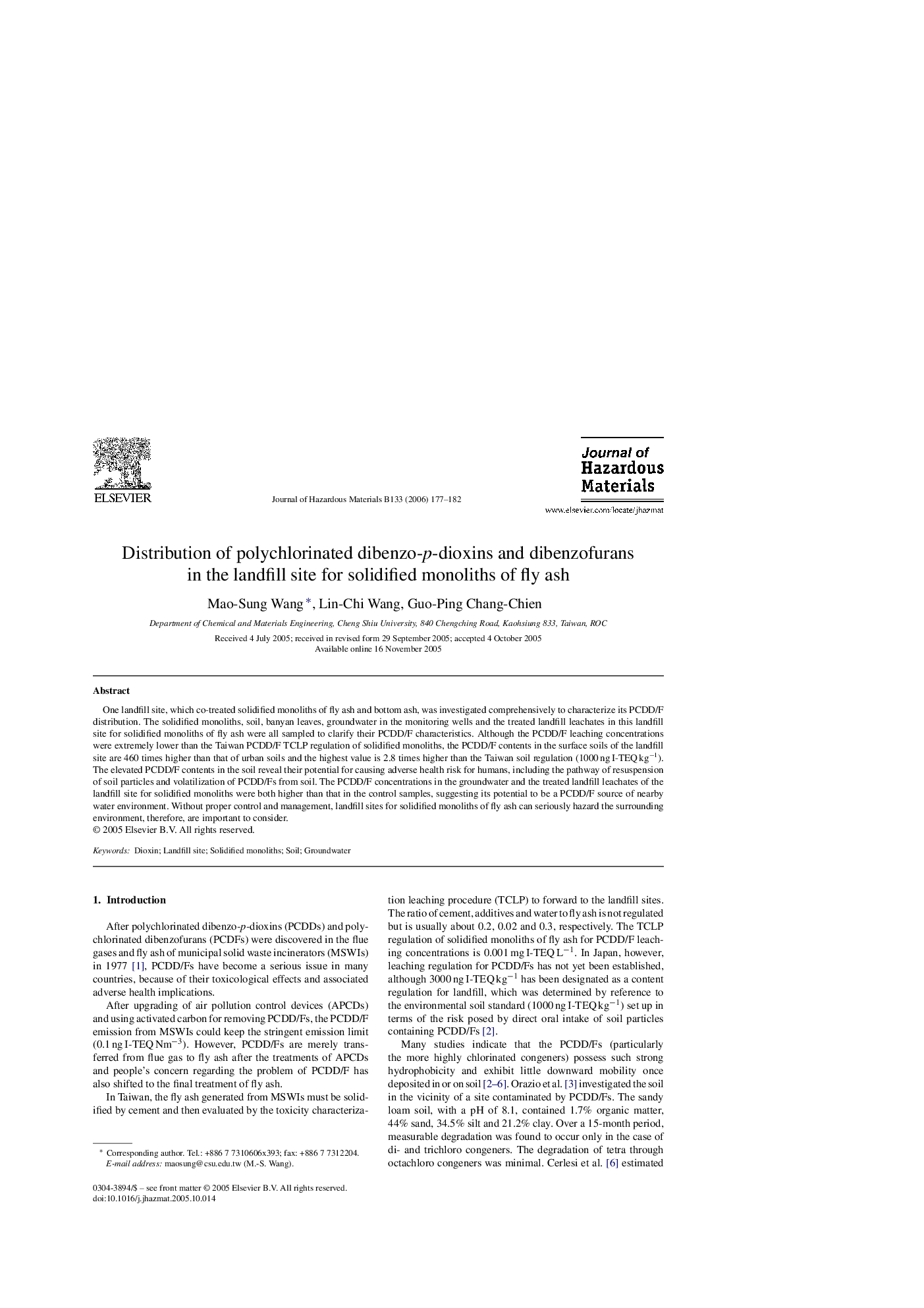| Article ID | Journal | Published Year | Pages | File Type |
|---|---|---|---|---|
| 585192 | Journal of Hazardous Materials | 2006 | 6 Pages |
Abstract
One landfill site, which co-treated solidified monoliths of fly ash and bottom ash, was investigated comprehensively to characterize its PCDD/F distribution. The solidified monoliths, soil, banyan leaves, groundwater in the monitoring wells and the treated landfill leachates in this landfill site for solidified monoliths of fly ash were all sampled to clarify their PCDD/F characteristics. Although the PCDD/F leaching concentrations were extremely lower than the Taiwan PCDD/F TCLP regulation of solidified monoliths, the PCDD/F contents in the surface soils of the landfill site are 460 times higher than that of urban soils and the highest value is 2.8 times higher than the Taiwan soil regulation (1000 ng I-TEQ kgâ1). The elevated PCDD/F contents in the soil reveal their potential for causing adverse health risk for humans, including the pathway of resuspension of soil particles and volatilization of PCDD/Fs from soil. The PCDD/F concentrations in the groundwater and the treated landfill leachates of the landfill site for solidified monoliths were both higher than that in the control samples, suggesting its potential to be a PCDD/F source of nearby water environment. Without proper control and management, landfill sites for solidified monoliths of fly ash can seriously hazard the surrounding environment, therefore, are important to consider.
Keywords
Related Topics
Physical Sciences and Engineering
Chemical Engineering
Chemical Health and Safety
Authors
Mao-Sung Wang, Lin-Chi Wang, Guo-Ping Chang-Chien,
